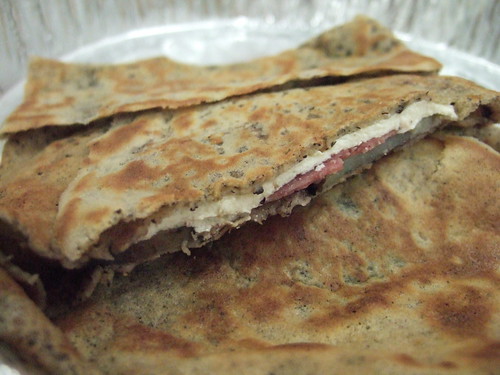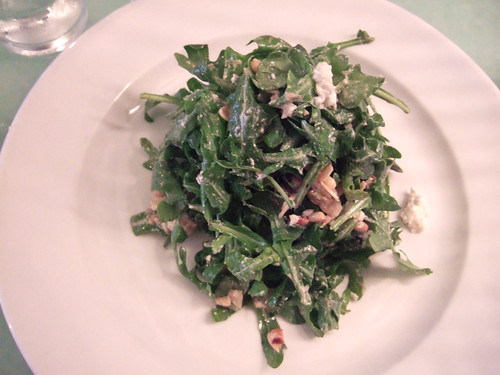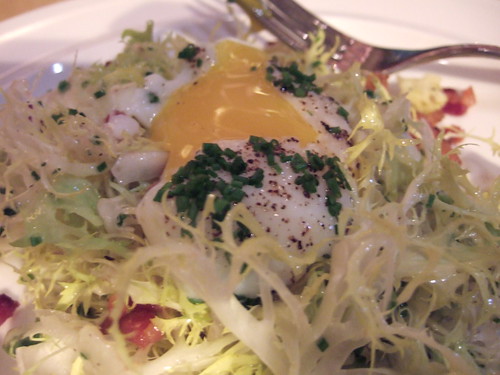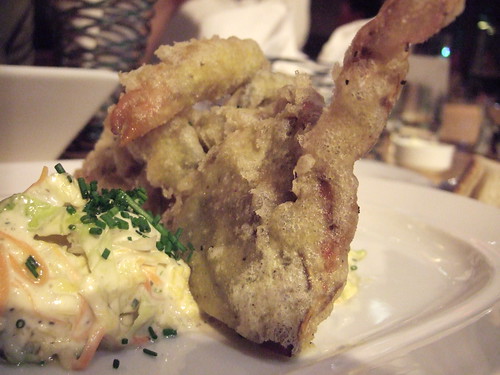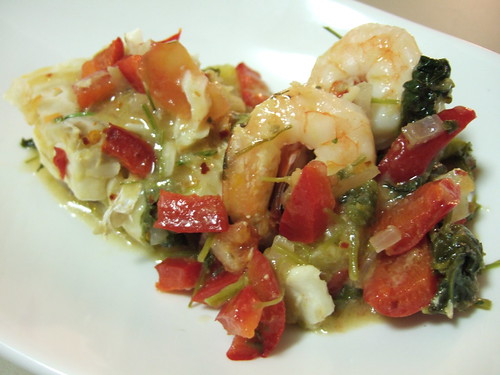We landed in Keflavik a quarter before seven in the morning. The line was long through customs. We had to go through X-ray again without our shoes and liquids since it was the point of entry to the rest of Europe for a lot of the passengers. Our luggage were waiting at baggage claim but we had to queue again to exchange our dollars to the local currency, krona. We picked up our light blue Honda Jazz from National with the pre-paid hostel vouchers I’ve reserved beforehand for the next six nights.
Driving outside of Reykjavik, my first impression was that the country was bleak and a little eerie. There were a lot of construction going on but the view was mostly a dry and flat valley as far as the eye can see. Our first stop was along a road marked Stardalur to take photos of the ice-capped mountains ahead of us. There would be more and better photo opportunities along the way but I was eager to start shooting.
We continued driving until we reached a spot with a tourist sign, the þingvellir, home of the þingvellir National Park set along the north of þingvallavatn, Iceland’s largest lake at 30 square miles. There was really nothing there except squishy bog covered with dry wildflowers and a view of the blue lake, but apparently, it is the only place in Iceland declared by law as sacred because it was also the spot where the country’s first settlers formed a commonwealth in the midst of Europe’s feudal monarchies.
The next stop was our home for the next two nights: Laugarvatn. It’s a small town with a golf course and a small spas but they were all closed because it was still off-peak season. The bonus, of course, was the Laugarvatn lake outside our room which made the water safe to drink from tap. I never thought I would ever say that water tastes so good. But it’s not a myth: Iceland has the best-tasting water. (Showering felt like I was wasting water; showering using what tasted and felt like bottled water!)
After settling in, we heated up some of the food we packed: Korean jjajang tuna and Japanese rice with some pickled perillo leaves. We knew food was going to be expensive and if we wanted to eat well the rest of the week, we had to pack easy-open cans and microwavable packets. For the next few dinners, the Dr. cooked hot meals using ingredients we bought in gas station stores along the way. We drank all four bottles of wine I packed.
Jet lag began to set in so we napped for a couple of hours. We woke up at 5pm local time, four hours ahead of New York, showered and made it to the town grocery store before it closed. We bought pasta and some sauce with the country’s infamous yogurt, or skyr. (I’m not a big fan of yogurt but I found myself eating a tub of it every morning because they taste so much better in Iceland.)
We started driving again on Route 35 and 37 to the Great Geysir which, sadly, hasn’t spouted since several tourists poured gravel into its mouth to lower the water level and force an explosion. The Strokkur was more reliable and we watched it spout boiling water every five minutes or so up to 66 feet. The entire area is still geothermically active and it was hard not to try and test the hot temperatures while the cold numbing wind blew on our faces. In fact, there are reported “accidents” each year from people who forget what scalding water really means.
We kept driving until we saw the sign for Gulfoss. Foss is “waterfall” in Icelandic and Gulfoss means “golden falls.” The road to the falls was barren and serene so it was an amazing sight to see the raging and deafening waters. Out of the calm was a welcomed chaos in a way. The river Hvita falls 105 feet into a mile-deep ravine and clouds of spray created rainbows.
Langjökull and Hofsjökull, two large ice caps, were ahead of us. Alas, the road was closed to cars until the F-road is dry and safe. This is known as the Kjölur route and could have been done in a day. We drove back to our hostel and thought we’d try the hot springs at the Laugarvatn lake instead but it was closed. The two restaurants next door were empty, too. We went back to our room dejected but we ended up cooking and playing Scrabble until the sun partially set at midnight (!).
Not so bad for our first day in Iceland.
Related post/s:
Day 1 in Iceland: Keflavik to Laugarvatn photos on Flickr






